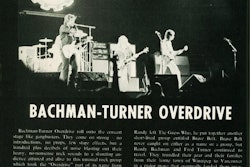Drop and Hook
Disconnecting a trailer and connecting to a load safely are considered routine tasks, but problems can arise if you don’t pay attention
For many experienced drivers, dropping off and picking up a loaded trailer are basic tasks that are sometimes taken for granted. Yet a driver who fails to devote proper time and attention to drop and hook could end up paying the price of a damaged trailer as well as a driver record notation.
As part of a recent hookup, Richard Denton checked the air and electrical lines on his loaded trailer.“It’s a pretty mundane task, but it’s extremely important that you slow down and do it right,” says Dan Kee, director of fleet development at PAM Transport.
Many problems can arise from improper connection to and disconnection from a trailer. The most common connection issue Kee hears about is high hooking, when the trailer comes in too high on the fifth wheel and the kingpin isn’t properly connected. The kingpin may trip the safety latch or land on top of the latch or the locking jaws and the locking jaws don’t grab the kingpin. “Basically what you have is an unsecured trailer,” Kee says. “It can and will fall off. It’s a safety issue, and the trailer can be damaged.”
Steve Marolf says spending time inspecting a trailer will help head off drop and hook accidents.The remedy is to make sure the kingpin is lined up to hit about halfway between the point and doughnut hole of the fifth wheel. Once you back in to the trailer, feel the bump and hear the click of the latch, do a tug test, shift into second gear and pull slightly forward to get a solid connection.
After that, set your truck brake, get out and visually check the connection, Kee says. “Your connection may be jammed up. It may give a false impression.”
Without the proper connection, you may be able to pull the trailer but not for long. “As soon as you hit a bump, the trailer will bounce right off,” says Don Washburn, certified lead instructor at Sage Truck Driving School in Wyoming. “The tug test is absolutely essential.”
The only sure way to know the jaws have grabbed the kingpin is to get on your knees with a flashlight behind the tractor and look. “In Wyoming when you take your CDL test, it’s an absolute; you have to do that,” he says.
Washburn says the most frequent problem he encounters is when a driver doesn’t follow the proper sequence when hooking up. The first step when hooking is to raise the landing gear before connecting the electrical and air lines. If you connect the lines first and then release the tractor brakes, “you could drag the dollies and damage them,” he says.
Even experienced drivers will forget sometimes. Washburn estimates about 70 percent of experienced drivers don’t follow the proper drop and hook sequence. For example, on the drop, they’ll disconnect the lines and pull the release for the fifth wheel. “Now you’ve set yourself up for pulling out and dropping the trailer on its nose,” he says. “Instead of walking past the lines and fifth wheel release, they do it absolutely backwards.”
Drivers say it’s important to drop off and pick up a trailer that’s in good working order and legal. Richard Denton, a company driver for Con-way Freight, says he will inspect trailers he’s picking up for mud flaps, lights, tires, permits and physical condition of walls, doors and roof. He’ll check out the landing gear for missing bolts or bad welds and debris on the landing pads that could fly off into another vehicle.
Steve Marolf, a company driver for Graphic Arts Express, says he’s picked up trailers that had flat tires. That means he was responsible for getting a new tire on a trailer that was dropped by another driver. “Check the trailer you’re picking up to make sure somebody didn’t leave you a piece of junk,” he says.
Another important point when dropping a trailer is to choose a flat, level surface without a bump or pothole, Washburn says. Rain can soak the ground that might sink under the weight of a trailer. If necessary use a concrete slab or wood timbers for support.
Before you hook up, check the fifth wheel for proper greasing and cracks. Washburn says to look for signs of metal in distress. He advises to carry grease packets on the road to apply before every hookup or when necessary. “In cold weather, grease gets real thick,” sometimes making it difficult for the locking jaws to grab the kingpin, he says.
Making sure the trailer is properly equipped and permitted becomes even more essential with the arrival of Comprehensive Safety Analysis 2010 and the FMCSA Pre-Employment Screening Program. “You may have a mud flap that’s missing and not think it’s a big deal, and it won’t hamper your ability to deliver the load and get your miles,” Kee says. “But [if you’re cited for it] what it will do is put a flag in your CSA report and go on your record. If you ignore the small stuff, the small stuff might prohibit you from getting a job.”
Kee advises that you inspect your trailer every time you park for a meal or rest break. He says he’s heard of a prankster or someone with a grudge pulling a kingpin release when passing a trailer. “If you don’t check that every time you do an inspection, you could pull out from underneath the trailer, thinking it was solidly connected,” he says.
Marolf, who admits he has dropped a trailer on his drive tires, says spending time checking out your trailer when dropping or hooking is worth it. “Everyone gets in a hurry,” he says.
Denton, who says he’s never dropped a trailer, says he takes 30 minutes or longer when picking up a load. He says drop and hook is the easiest kind of trucking, but that doesn’t mean you can rush it. “The slower you are and the more careful you are, the faster you get done,” he says.
The 90-Degree Test
Before you hook up to a trailer, check to make sure it measures up to the 90-degree test.
The idea is to visualize 90-degree angles from the trailer underside to the ground at the trailer’s nose and back doors. The height from the underside of the trailer platform at the kingpin to the ground should be roughly the same as the height from the underside at the back to the ground, says PAM Transport’s Dan Kee. “If it’s too high or too low [compared with the back end], it causes issues,” he says.
If the trailer nose is too high, when the driver backs in, especially in the dark, he or she might high-hook it or totally miss it, and the trailer slides into the back of the cab.
If it’s too low, it may require the driver to make adjustments, such as completing the arduous task of cranking up the landing gear to the proper height. “If it’s really hot or really cold, you’re not going to be happy,” Kee says.
Pretrip Inspection
Follow a step-by-step process every time you do a pretrip inspection of your trailer. You can’t climb the trailer to check the roof, but look for cracks or loose pieces and the general condition of the frame.
“You need to take your time and walk around — more than just thumping the tires,” says PAM Transport’s Dan Kee, a former Arkansas state highway policeman. “Bend over, reach and touch. It’s highly important to do this, not only for safety, but your living is tied up in that trailer.”
You also want to keep the trailer in the condition you would want another driver to leave for you.
Begin at the nose and work backward.
• At the header board, look for recent inspections and registration. Inspect the air and electrical lines for excessive wear or broken pieces.
• Check the kingpin, kingpin safety latch and trailer apron for damage. Inspect the landing gear for missing or cracked bolts or bad welds. Check the trailer frame and exterior walls for holes or cracks and the crossmembers for rust or cracks or even missing crossmembers.
• Check tires for proper air pressure and space between tires for debris. Look for rust trails or shiny spots around the lug nuts and tighten if necessary. Check for lubricant in the wheel hubs. Make sure the tandem release sliders are functioning properly.
• Inspect the air hoses for chafing or pinching and adequate elevation off the ground. Check the brake chamber and slack adjusters for safe condition. Check the condition of the suspension and slack adjustors.
• Check the rear bumper, inspect the rear door hinges and make sure license plate is secure.









